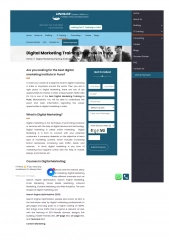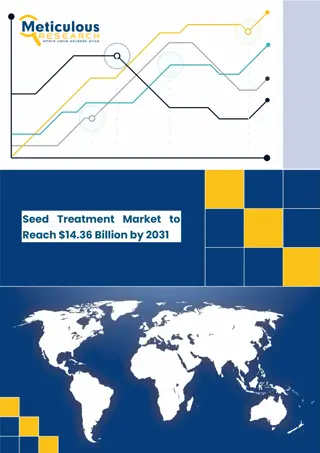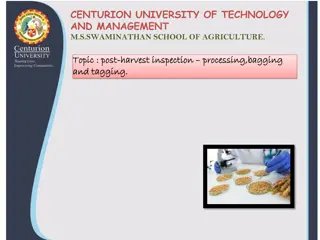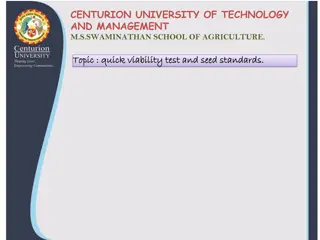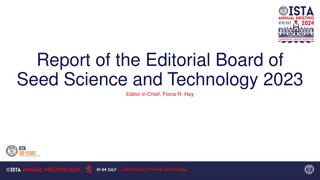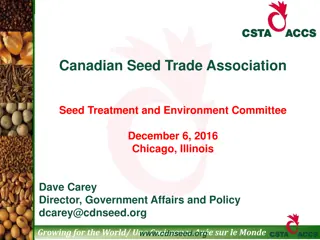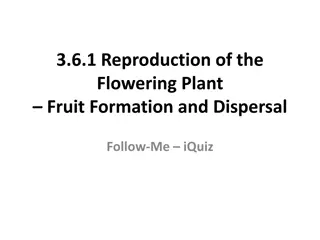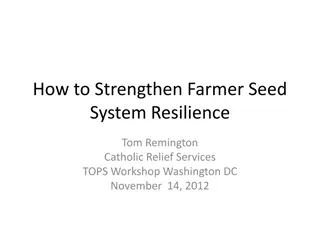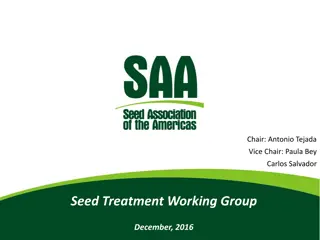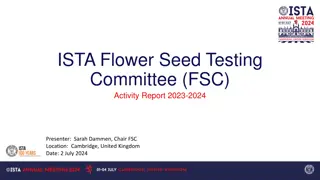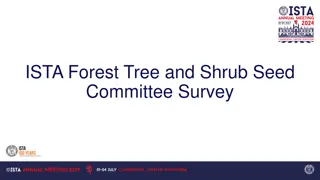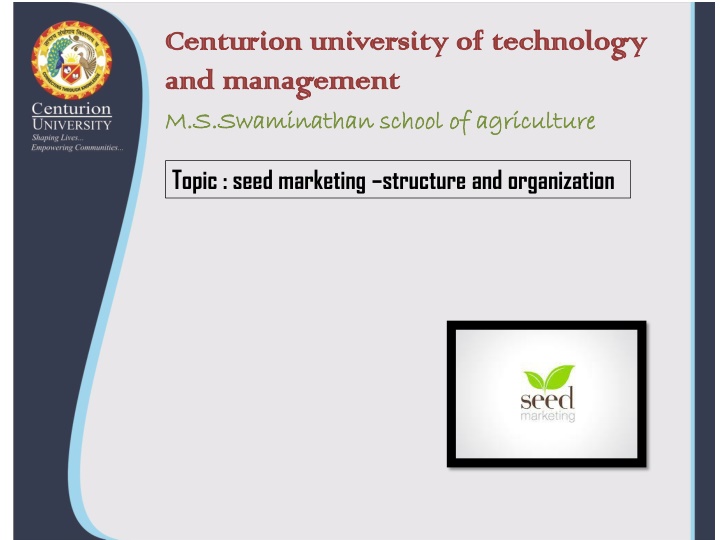
Seed Marketing Structure and Organization
Learn about seed marketing and distribution systems, including direct and single-level channels. Discover how seed marketing aims to meet farmers' needs, achieve seed companies' objectives, and ensure product quality. Explore the importance of organized distribution systems in seed marketing.
Download Presentation

Please find below an Image/Link to download the presentation.
The content on the website is provided AS IS for your information and personal use only. It may not be sold, licensed, or shared on other websites without obtaining consent from the author. If you encounter any issues during the download, it is possible that the publisher has removed the file from their server.
You are allowed to download the files provided on this website for personal or commercial use, subject to the condition that they are used lawfully. All files are the property of their respective owners.
The content on the website is provided AS IS for your information and personal use only. It may not be sold, licensed, or shared on other websites without obtaining consent from the author.
E N D
Presentation Transcript
Centurion university of technology Centurion university of technology and management and management M.S.Swaminathan school of agriculture M.S.Swaminathan school of agriculture Topic : seed marketing structure and organization
SEED MARKETING A definition of seed marketing Seed marketing should aim to satisfy the farmer's demand for reliable supply of a range of improved seed varieties of assured quality at an acceptable price. To the retailer in the agricultural sector, for example, it is selling seed along with other inputs to the farmer. To the farmer it is simply selling what he produces on his farm. However, whatever the circumstances, a well-defined sequence of events has to take place to promote the product and to put it in the right place, at the right time and at the right price for a sale to be made. Too many people think of marketing solely in terms of the advertising and selling of goods, whereas in reality marketing starts long before the goods exist and continues long after they are sold. Therefore, for the marketing process to be successful: the farmer consumer's needs must be satisfied; the seed company's objectives must be realized. MARKETING STRUCTURE Seed distribution systems Seed distribution can be carried out by government, public sector agencies, co-operatives and the private sector or, as is often the case, by a combination of all of these. Channels for seed marketing may be described as:
Direct The seed producing organization supplies the farmer directly. Some features of direct channel distribution are: The supplier has direct contact with the consumer A high level of service and customer support can be maintained Direct control is maintained over the quality of the product The upkeep of such a system can be expensive, with high fixed costs if a sales force is employed A responsive management structure and well-motivated staff are required where there are many staff involved in a direct sales organization there can be an inbuilt inertia to change so the system may lack flexibility. the revenue necessary to pay for the high fixed costs will only come from having a wide product range and achieving good market shares or selling high value products such as horticultural seeds.
Single level The seed producing organization supplies the farmer through independent retail outlets. The main features of this system are that: The seed supplier relies on the retailer for contact with the consumer. Retail networks require strong service and support from the supplier Good administrative control must be provided by the sales management.
The supplier's distribution system must be well organized and responsive product quality at the retail level must be monitored for deterioration and adulteration and a return system should be considered Although the products may be well promoted, the supplier relies on the retailer to make the final sale. Multilevel The seed producing organization supplies a national distributor, wholesalers or regional distributors who, in turn, supply sub- distributors or the retail outlets. This system is characterized by: The supplier having no direct contact with the consumer Products being strongly promoted in order to create demand Supplying seed to the distributors in sufficient time to achieve timely availability at the retail level Management ensuring that there is a good system of monitoring sales and obtaining Feedback from the consumer The distributor being interested only in the strongest selling lines. If neither infrastructure nor the economy are well developed, national distributors may simply not be available and the seed producer will have to supply seed to regional wholesalers or distributors.
Sources of seed available to farmers For farmers there are a number of sources available for the purchase of seed. These are: Direct sales The seed producer supplies the farmer directly from central seed stores and a network of his/her own supply points Farmer producers Farmers with seed production contracts are licensed to supply other farmers within their zone of influence Cooperatives Cooperatives act as 'farmer producers' and/or as suppliers of inputs to members Farmer dealers Farmers act as dealers, supplying their neighbours; this can evolve into a highly developed system Commission agents These work directly with the producer or his/her intermediaries, passing on orders from the farmers Grain merchants Traders involved in the seed and grain business who are also licensed seed producers
Crop buyers Collectors and crop or commodity traders who provide a point of contact with farmers and can be used to market seed Retail store dealers Town and village dealers who retail a range of agricultural inputs, with the larger operators possibly having sub-dealers Industrial processors Processors interested in specific crops including oilseed crushers and vegetable canners, who may have an interest in supplying seed as part of a growing contract or integrated production system Cold store operators Potato cold store operators trade potato seed since they deal directly with the growers and have the appropriate storage Consumer outlets Garages, shops and supermarkets (are best suited to display small packets of seed) Mail order Suitable for low volume, high value products such as vegetables and flowers. Although government extension outlets are not strictly retail outlets, seed is sometimes supplied to the farmer through government sponsored agencies and departments which administer crop or regional development and credit programmes.
ORGANIZATIONAL CHART Product management Concentrates on developing and implementing marketing policy for a seed product or range of products Advertising, promotion and public relations Aims to create product awareness, influence farmers' buying decisions, (PR) and build up a positive perception of the company Sales order administration and dispatch Involves receiving and processing orders, allocating stock and dispatching orders, and maintaining stock records Stock control and quality assurance Involves managing the inventory for each class of seed, crop and variety, to ensure maintenance of germination and vigour Distribution and transport Entails moving the seeds from the point of production to the point of sale Sales and invoicing The process of making the actual sale and receiving payment for it, i.e. the end result of the marketing activity Management information Involves collating and interpreting sales information and other information as a basis for monitoring operations and planning future activities Customer care Involves after-sales service, dealing with complaints and maintaining customer loyalty
Thank you Thank you

